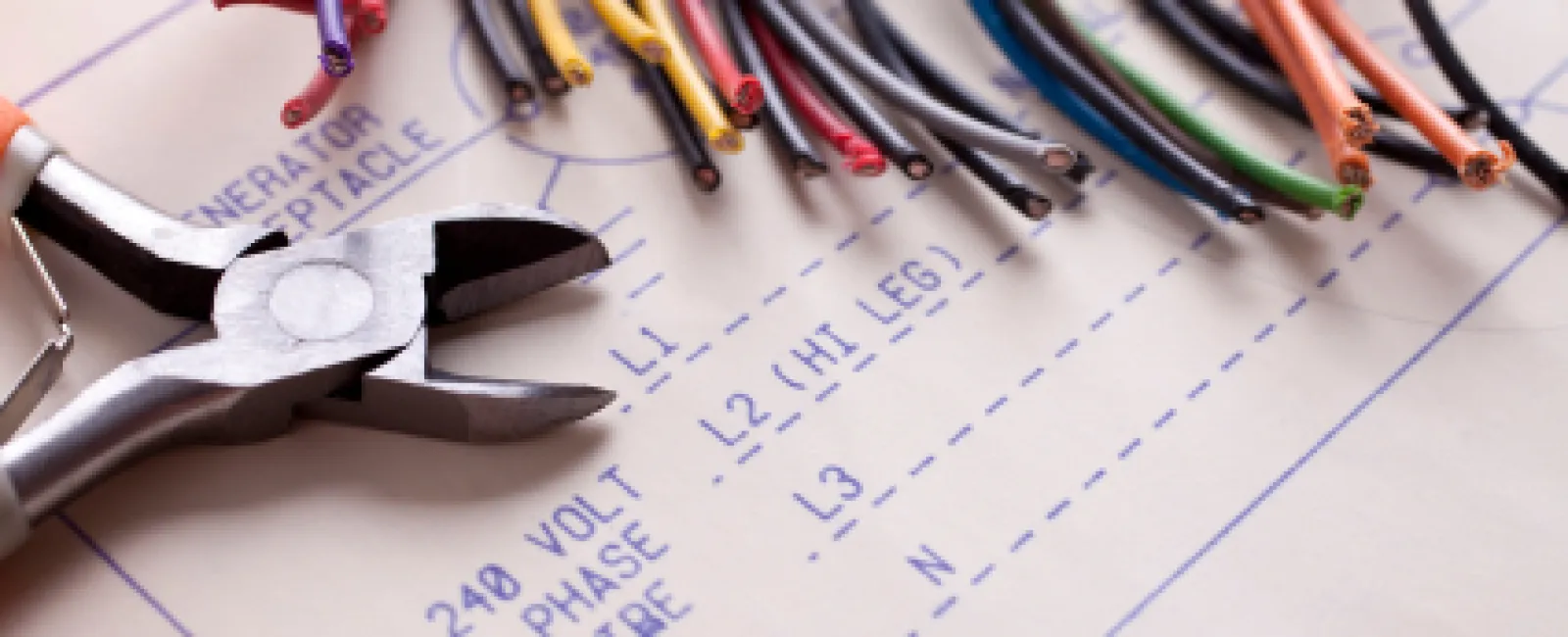Most homes today use a standard electrical system, but they're still homes that use an older one. Each method has unique wire configurations, and it's essential to know how to identify these wires if you are working with wiring in your home. Working with electrical wiring can be challenging, and in most cases, it is best to call a professional such as Mr. Electric.
Electrical wire color codes are a way of identifying different types of wires. Electricians use the color-coding system to ensure that wires are correctly connected.
Black Wires
These wires are used for 120-volt circuits, lighting, and small appliances such as coffee makers and hair dryers. They are also used for 240-volt circuits such as larger appliances such as refrigerators or clothes dryers. These wires are usually solid black but may also have white stripes down the middle if they carry high voltage.
Red Wires
Red wires are typically used for 12V systems but can also be used for higher voltage systems if combined with other colors such as black, yellow, or green. Red wires are often found in alarm systems, which use a low voltage current to activate an alarm when it detects movement within range of the sensor.
Red wires are typically connected directly to a building's main power supply, which could be a fuse box or breaker panel in your home or business. These wires do not carry any electricity themselves and instead serve as a conduit through which electricity travels from one place to another in your home or business. Red wires should always be securely fastened with wire nuts or crimp connectors to ensure safety.
Green Wires
Green wires are typically used for telephone lines but can also be used for other communication lines such as cable television or internet connections (cable). Green wires should never be combined with red wires because this may cause damage to your equipment or even start a fire.
White and Gray Wires
The white wire is neutral and carries the electrical current back to the main panel, which is distributed to other parts of your home. The gray wire is a hot wire that has electricity from the breaker box to other places in your home. This color code allows you to distinguish between hot and neutral wires easily.
Blue and Yellow Wires
These two wires are used as additional hot wires by some older homes. If your house has these two wires in addition to the white and gray ones, you will need to use them according to local codes or consult an electrician before using them as part of your electrical installation.
Troubleshooting
If your lights do not work when you flip on an appliance, check both ends of each light fixture's cord or lamp cord for loose connections or damaged wires. If you find loose connections or damaged wires, repair them with electrical tape or other appropriate materials before using your lights again. If your lights still do not work after checking all possible problems, replace them with new ones.
Safety Tips For Working With Electrical Wiring
- Read all instructions and labels carefully.
- Buy the correct equipment for the job you have in mind.
- If you're not sure about something, ask someone who does know what they are doing before proceeding further with your project.
- Use insulated tools like screwdrivers and pliers with a rubber coating on them.
- Use gloves when working with electricity because they protect your hands from getting hurt if they accidentally touch a live wire.
- Ensure all outlets have covers installed so children and pets cannot get their fingers into them and electrocuted.
- Make sure power is off before working on electrical requirements.
- Never work on wet surfaces when dealing with electricity because this could cause an electrical shock when standing in water while working on a circuit breaker, etc.
Concerns With Using the Incorrect Wires
Incorrectly installed wiring can pose a serious fire hazard and cause extensive damage to homes and other buildings. In addition to causing fires, incorrect wiring can create unsafe conditions for residents of homes or other buildings where wiring is not installed according to code requirements because it may overload circuits or damaged equipment such as light fixtures or appliances.
Mr. Electric
Mr. Electric offers free online resources that help educate homeowners about electrical safety issues and tips for selecting quality contractors with experience with residential wiring projects. Hiring a professional electrician like Mr. Electric is always best to ensure electrical wiring is set up correctly.




